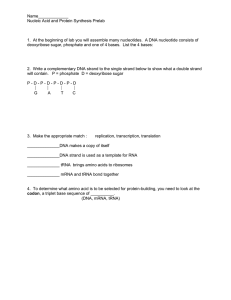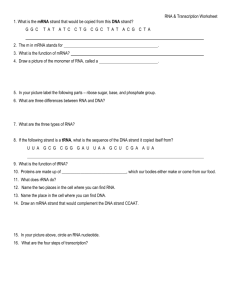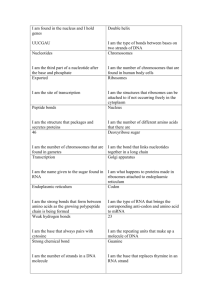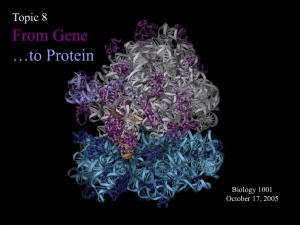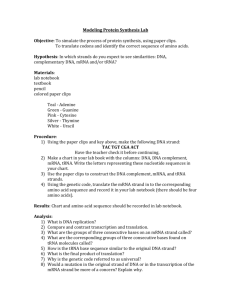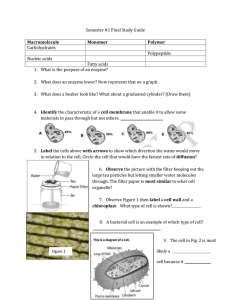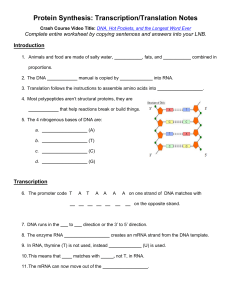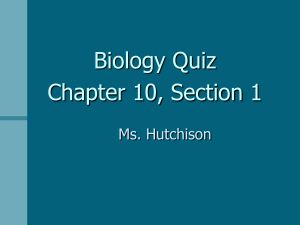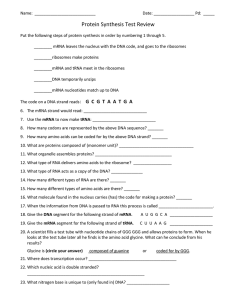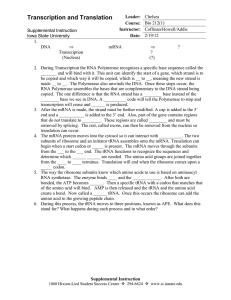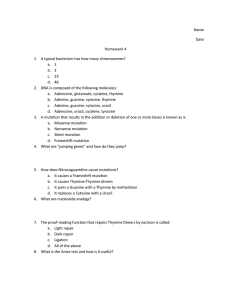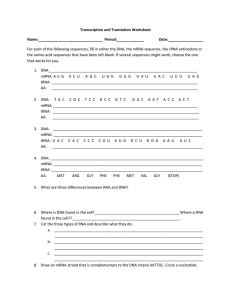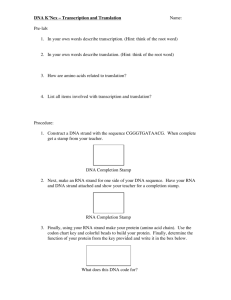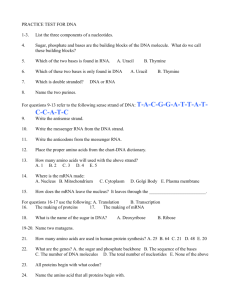Document
advertisement
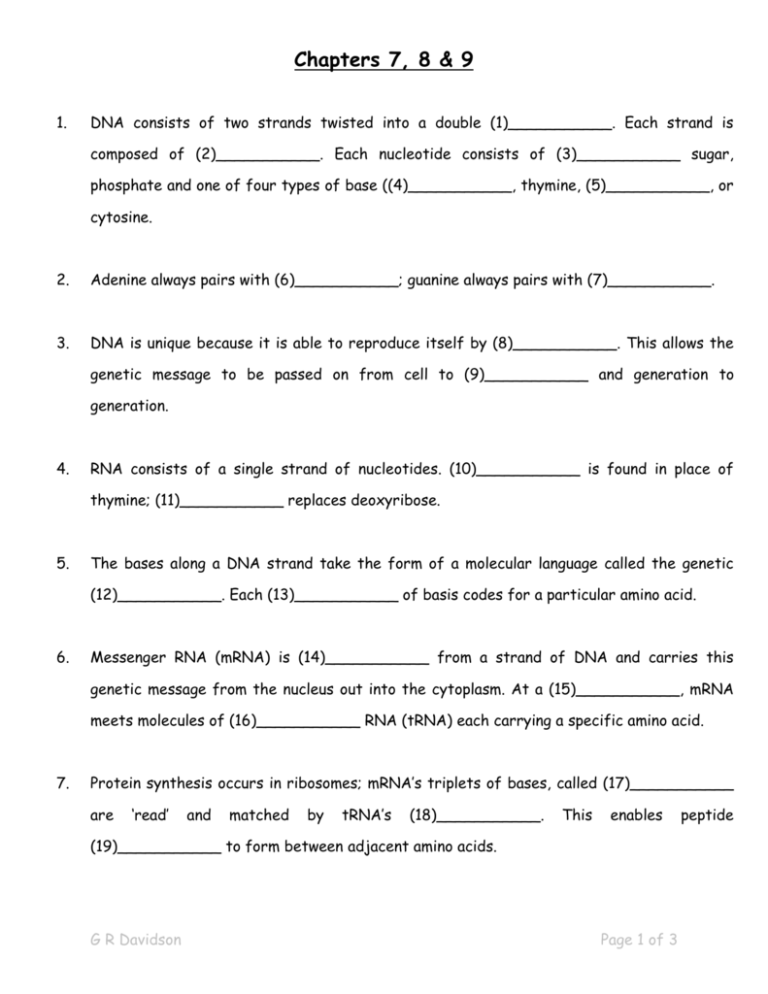
Chapters 7, 8 & 9 1. DNA consists of two strands twisted into a double (1)___________. Each strand is composed of (2)___________. Each nucleotide consists of (3)___________ sugar, phosphate and one of four types of base ((4)___________, thymine, (5)___________, or cytosine. 2. Adenine always pairs with (6)___________; guanine always pairs with (7)___________. 3. DNA is unique because it is able to reproduce itself by (8)___________. This allows the genetic message to be passed on from cell to (9)___________ and generation to generation. 4. RNA consists of a single strand of nucleotides. (10)___________ is found in place of thymine; (11)___________ replaces deoxyribose. 5. The bases along a DNA strand take the form of a molecular language called the genetic (12)___________. Each (13)___________ of basis codes for a particular amino acid. 6. Messenger RNA (mRNA) is (14)___________ from a strand of DNA and carries this genetic message from the nucleus out into the cytoplasm. At a (15)___________, mRNA meets molecules of (16)___________ RNA (tRNA) each carrying a specific amino acid. 7. Protein synthesis occurs in ribosomes; mRNA’s triplets of bases, called (17)___________ are ‘read’ and matched by tRNA’s (18)___________. This enables (19)___________ to form between adjacent amino acids. G R Davidson Page 1 of 3 peptide Chapters 7, 8 & 9 8. Rough (20)___________ reticulum bears ribosomes on its outer surface. 9. Freshly synthesised protein is transported via the endoplasmic reticulum to the (21)___________ apparatus where it is processed and packaged in (22)___________. 10. Some protein is (23)___________ out of the cell by vesicles moving towards, and fusing with, the plasma membrane. 11. In addition to carbon, hydrogen and oxygen proteins always contain (24)___________. 12. A protein consists of sub-units called (25)___________ (of which there are about 20 types) joined together by peptide bonds to form polypeptides. 13. A molecule of (26)___________ protein consists of parallel (27)___________ chains and has a structural function. 14. A molecule of (28)___________ protein consist of polypeptide chains folded into a spherical shape. Some are structural (e.g. those in the plasma membrane); others act as (29)___________, hormones or (30)___________. adenine amino acids antibodies anticodons bonds cell code codons cytosine deoxyribose endoplasmic enzymes fibrous globular golgi guanine helix nitrogen nucleotides polypeptide replication ribose ribosome secreted thymine transcribed transfer triplet Uracil vesicles G R Davidson Page 2 of 3 Chapters 7, 8 & 9 ----------Word Bank---------- G R Davidson Page 3 of 3
